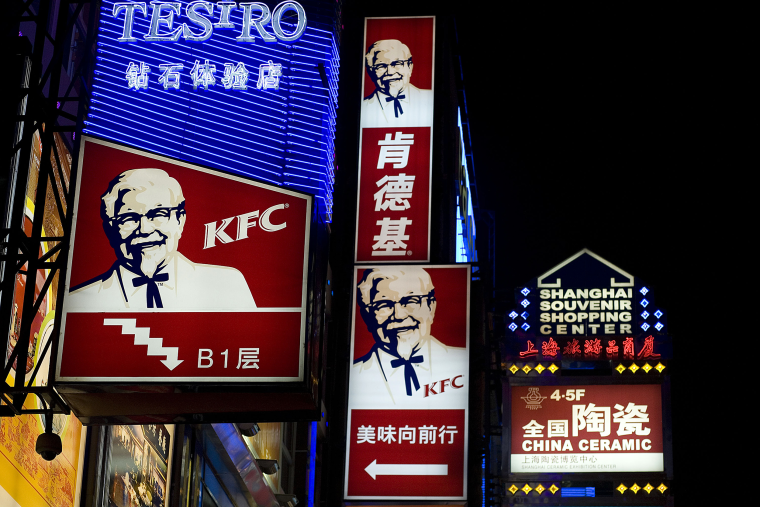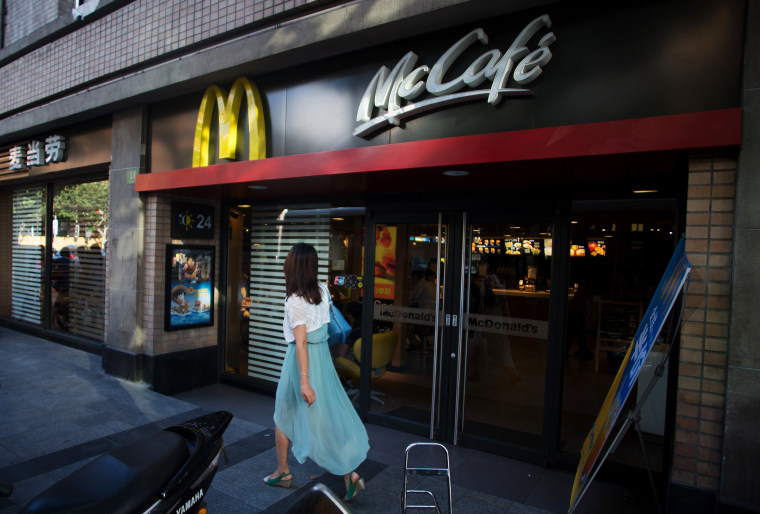I currently live abroad, but my consumer experience has begun to feel more and more like the movie “Groundhog Day” with Bill Murray, only with the endless malls and chain stores you can find anywhere in America — Starbucks, McDonalds, Domino's, Dairy Queen, Pizza Hut and the like. While small shop owners do exist, you could stand on almost any corner in Shanghai, put on a blindfold, spin around, walk in whatever direction you choose and end up at what looks like the same mall as anywhere else.
Chain stores and restaurants seem to multiply faster than a Gremlin drenched with a fire hose. On the bright side, I guess it can take the stress out of deciding where to go until you get familiar with the place.
That, of course, is how things can get complicated during extended travel or after becoming an expat. I love eating local food and cooking — but I am still an American, and sometimes crave a taste of home, which is where those repetitive chains can help, by easing homesickness or at least providing me with a quick meal with which I am already quite familiar.
Contrary to what you may see on Instagram, not everyone wants to eat escargot, dishes with pork or food with extreme levels of spiciness — at least not all the time. Some days you may be at the end of your budget and don't want to risk spending it on something you may not like or can’t digest properly.
And, especially for expats, in addition to comfort food, we need comfortable clothes that well… actually fit. Shopping for clothes in Asia as an American woman can be disappointing unless you have access to American chains like Old Navy or Forever 21 — stores that will have clothes and shoes that fit a typical western body.
And even the Gremlin clones had their slight differences, as do some chain locations abroad.
To ease the blow of repetition or appeal more distinctly to locals, some outlets have a way of putting a more regional spin on chains that they open in other countries. Hotdogs appear to be very popular in Asia and you can order a burger with a hotdog or two inside of it at Burger King. McDonalds in Italy serves sandwiches on Ciabatta while ones in Paris also serve macaroons.
Or take Dunkin Donuts, which became my frequent neighborhood hangout while living in Shanghai. While a glazed donut and large coffee at Dunkin Donuts tastes great back in the U.S, you usually have to enjoy it to go or pray that one of the four deeply uncomfortable seats will be available. Contrast this to a Dunkin Donuts in Shanghai: Excellent coffee, plush seats, strong internet, local spin on donuts (cheers to matcha powder and that strawberry cream donut with the happy face that I can’t forget) and music fit for any party.
And why settle for pepperoni when you could have fried fish balls or squid on your Pizza Hut pizza in China?
Time abroad has given me a different perspective on these aspects of chain retail. A chain can be something that either restricts you or links you to others; it can provide certain comforts of home and also restricts the prosperity of unique businesses, regardless of global location.
That is something we’ve exported like the stores. When I was a young girl in Boston, I would stop at my local neighborhood store like clockwork after school. Doritos, chocolate bars and dusty soda cans would beckon me from the cramped aisles to sooth the period between school and homework, and they recognized my face and purchase preferences without the use of a computer algorithm. Today, such places are becoming increasingly rare and replaced with more 7-Elevens.
And I remember one popular and slightly grungy neighborhood coffee shop near my college alma mater; it lost a street turf battle to Starbucks, but not because it had lesser-quality coffee. Or there was the time, after a move to Los Angeles, that my taste buds were tantalized by the presence of a refreshingly normal and unpretentious diner near Santa Monica Pier that specialized in pie. A short time later, I went back in search of another slice to find the diner had faded away into Hollywood history.

I live in Vietnam right now, which has Starbucks in addition to a strong local coffee scene, where tons of unique coffee shops dominate. At first, I thought that the coffee shop Cong CaPhe in Saigon was a solo coffee shop; it turns out that it is also a part of a chain. I guess the super cozy interior, old tattered books on the wall and wooden furniture at both locations fooled me.
Is there a solution to avoid local places being strangled by the chain? While we may have little control over the inflated commercial real estate prices that often play a hand in smothering unique stores around the world, consumers can still do our part to keep them afloat, both at home and abroad. Let’s try to treat small businesses like truly beloved family members or friends; don’t wait until they fade away to cry at their funeral. Love them now and loudly tell others how great they are while they are here. And, when abroad, try to make an effort to support the local stores, even when you need a taste of home.
Speaking of which, it is time for me to get a Banh Bao from a local cafe.

